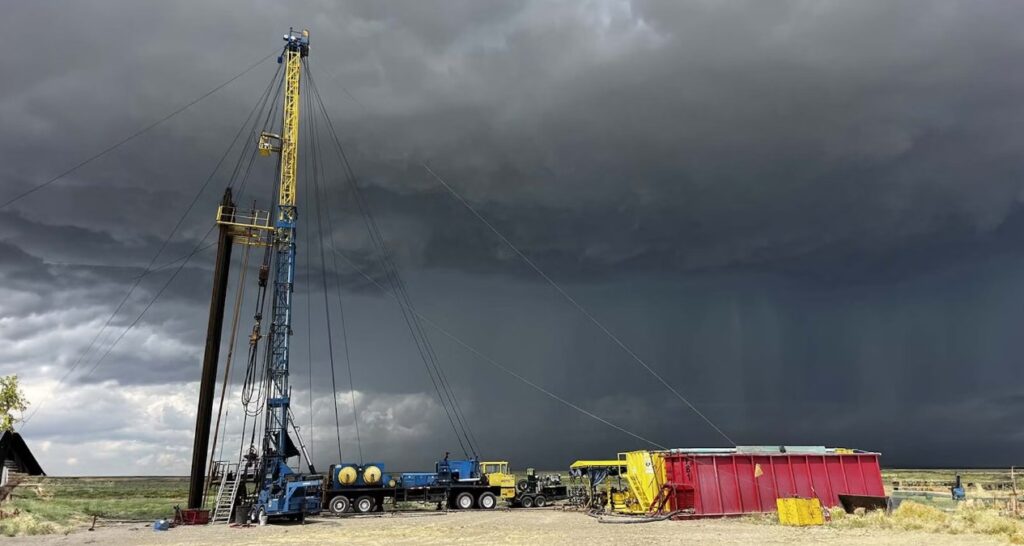This technology is not only benefiting industry giants but also empowering smaller operators to compete more effectively. By analyzing vast datasets, predicting equipment failures, and optimizing exploration, AI is driving a shift toward faster and more economical oil extraction. As global demand for energy persists amid volatile prices, the integration of AI promises to reshape the landscape of oil production.
AI’s Role in Empowering Big Oil Companies
This has enabled BP to increase its annual spending on oil and gas while speeding up offshore drilling in the Gulf of Mexico, where AI has slashed seismic data analysis time from 6-12 months to just 8-12 weeks.
Similarly, Chevron employs AI-powered drones to monitor shale operations in Texas and Colorado, detecting issues like emissions leaks remotely and minimizing production shutdowns, which boosts operational uptime and reduces maintenance costs.
ExxonMobil has also adopted AI for seismic data analysis, significantly cutting exploration time and costs.
According to industry reports, these advancements allow big players to reduce overall operational costs by up to 20% through predictive maintenance and optimized workflows.
Shell, another heavyweight, has seen similar gains, with AI integration preventing equipment failures and further driving down expenses.
For these companies, AI’s ability to process massive amounts of data enables better decision-making in complex environments, from deepwater reserves to mature fields.
Bridging the Gap for Smaller Oil Companies
This has resulted in a 15% improvement in drilling efficiency across their U.S. rigs.
Tools like those from Enverus are tailored for smaller firms, optimizing inventory management, well spacing, and profitability through AI-driven insights.
Even operators producing as little as 10,000 barrels per day can now harness AI and machine learning to enhance cash flow and operational efficiency.
This democratization of technology means smaller companies can reduce risks in exploration, cut costs, and maximize production without the need for massive upfront investments.
In the Permian Basin, for example, AI is helping independents produce more oil at lower costs, contributing to remarkable efficiency gains across the board.
By adopting off-the-shelf AI solutions, these firms are closing the gap with larger competitors, fostering innovation in a sector often dominated by scale.Cost Cutting Through AI InnovationsOne of AI’s most immediate impacts is in cost reduction, where it streamlines operations and prevents costly downtime. Predictive maintenance powered by AI can lower production and maintenance expenses by up to 20%, as noted in a 2024 BCG report.
This is achieved by monitoring equipment in real-time and forecasting failures, allowing for proactive interventions.
In upstream activities, AI optimizes supply chains and automates routine tasks, further trimming overheads amid fluctuating oil prices.
For both big and small companies, AI minimizes field worker exposure to hazards by automating inspections—such as Chevron’s drone usage—which not only cuts labor costs but also enhances safety.
Overall, the technology’s ability to analyze data at speeds unattainable by humans leads to smarter resource allocation, with market analyses projecting the AI in oil and gas sector to reach $25.24 billion by 2034, driven largely by these efficiency gains.
Geological Advancements Powered by AIAI is revolutionizing geological exploration by providing deeper insights into subsurface structures. Advanced algorithms create 3D visualizations from seismic data, helping geoscientists predict drilling challenges and optimize well placement.
This has been particularly transformative for big firms like BP, where faster data processing opens up new opportunities in challenging terrains.
Smaller companies benefit similarly, with AI enabling precise fault detection and risk assessment in untapped areas.
Broader industry trends show AI reducing exploration risks and costs, with tools like those from OpenPetro AI accelerating analysis that would otherwise take humans weeks or months.
In essence, AI turns raw geological data into actionable intelligence, making previously marginal reserves viable and sustainable.
Quantifying the Impact: Barrels and Beyond
In one case, unified data analytics boosted output from 38,000 to 58,000 barrels per day—an increase of 20,000 barrels daily—without additional drilling.
Microsoft’s AI collaboration with an oil company aims to add up to 50,000 oil-equivalent barrels per day by 2025.
These figures underscore AI’s potential to scale production efficiently. For smaller operators, even modest AI applications can enhance output from baselines like 10,000 barrels per day, while larger firms see compounded gains across vast portfolios.
As AI adoption grows, these quantifications highlight not just incremental improvements but transformative boosts in global oil supply.
Looking Ahead
AI’s integration into oil production is poised to accelerate, offering faster, cheaper, and more sustainable extraction for companies of all sizes. Kind of ironic that the race to AI dominance may help fuel the Energy Dominance policies of the Trump Administration. While challenges like implementation hurdles exist, the benefits in cost cutting, geological precision, and production uplift are clear. As the industry navigates energy transitions, AI stands as a critical tool for maintaining competitiveness and meeting global demands. For the Energy News Beat audience, staying abreast of these developments will be key to understanding the future of oil in an AI-driven world.

